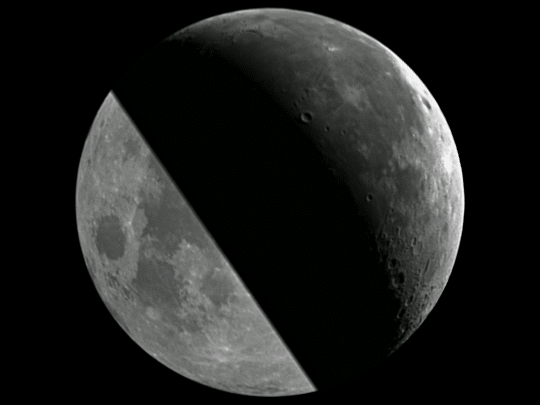


If you look closely at a crescent moon just after dark, you’ll notice the faint face of the moon. While the brightly lit crescent is receiving direct light from the Sun, the moon’s dark face is being dimly illuminated by “earthshine”—light reflected off the Earth.
The brightness of earthshine depends on the Earth’s total reflectance (called “albedo”). The Earth’s albedo is principally governed by clouds, since they are almost always more reflective than the Earth’s surface. Changes in the brightness of earthshine are mainly caused by changes in cloudiness—the cloudier the Earth, the brighter the earthshine.
Scientists from the New Jersey Institute of Technology and the California Institute of Technology have measured earthshine since the 1980s, and continuously since 1997. By comparing the earthshine data with NASA global cloud cover data, they confirmed the relationship between albedo and cloudiness. They also derived an estimate of changes in the Earth’s albedo over the past 20 years. The researchers found that while the Earth’s surface grew sunnier and less cloudy from 1984 to 2000, the trend appears to have reversed itself somewhat from 2001-03. During the last three years the Earth grew cloudier, brightening the planet’s albedo to pre-1995 values.
Albedo is an important factor in climate change because it determines the amount of energy from the Sun that the Earth absorbs. These new albedo estimates will help scientists better understand global climate change and improve climate models.
This image shows the crescent moon composited with an enhanced image of the face of the moon illuminated by earthshine.
For more information, read: Scientists Look at Moon to Shed Light on Earth’s Climate
Image courtesy Earthshine Project, Big Bear Solar Observatory